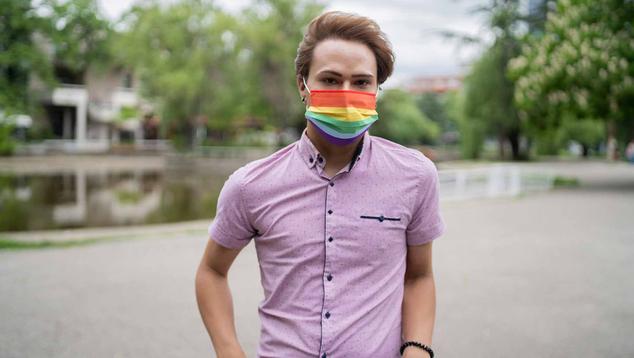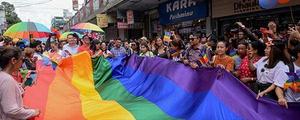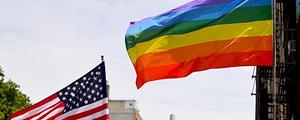This is a summary of the findings from the manuscript “COVID-19 Stress and Sexual Identities,” written by Drs. Wendy Manning and Claire Kamp Dush. Click here for the full paper.
U.S. sexual minority adults who are married or cohabiting with a partner faced greater overall stress, stress increase, COVID-19 health stress, relationship stress and economic stress during the COVID-19 pandemic than married or cohabiting heterosexual adults. The types and degrees of stress varied among sexual minority subgroups, possibly indicating different responses to the pandemic. Furthermore, these differences existed even when considering other potential sources of stress, including everyday discrimination and healthcare discrimination.
A few words about the methodology used in this study before delving into the findings:
- These data come from the National Couples’ Health and Time Study (NCHAT), a nationally representative survey of 3,642 respondents aged 20 to 60 who are married or cohabiting with a romantic partner, including representative samples of individuals with racial and ethnic minority and sexual minority identities. Sexual minorities are defined as those who do not identify as exclusively heterosexual, including lesbian, gay, bisexual and queer (LGBQ+) individuals.
- The study was conducted by web from September 2020 to April 2021 using the Gallup Panel and was inclusive of a wide range of racial, ethnic and gender identities. Respondents were provided an extensive set of sexual, gender, racial and ethnic identities to choose from, were able to report more than one identity, or could type in a response if their identity was not included in the formal list of options.
- Sexual identity was classified for this study using four categories: (1) exclusively heterosexual, (2) exclusively gay/lesbian, (3) bisexual (including those who chose bisexual and another non-monosexual identity such as pansexual or queer), and (4) another sexual identity. The fourth group encompasses all other sexual minorities not in the first three groups, including those naming another specific sexual identity (e.g., pansexual, queer, asexual, demisexual) as well as those who checked the boxes for multiple sexual identities (other than those captured in category 3).
- Those who reported another sexual identity or multiple sexual identities will be referred to as queer+ here forward.
Bisexual and Queer+ Partners Report More Stress Than Heterosexual and Gay/Lesbian Partners
The survey included two questions that shed light on differential stress levels across sexual identity groups. The first asked respondents to indicate how stressed they have been in the past week, using a five-point scale where 1 is “not at all stressed” and 5 is “very stressed.”
Heterosexual and gay/lesbian respondents reported similar levels of overall stress, rating their stress in the past week between 2.6 and 2.8, on average. By contrast, average stress levels were 3.4 or higher among bisexual and queer+ respondents.
Differences in self-reported stress by sexual identity persisted even when considering the effects of several demographic characteristics (gender, age, marital status, race/ethnicity, number of children, education) as well as other potential sources of stress (household income, perceived everyday discrimination and healthcare discrimination, social support from friends and family, LGBQ+ specific community support, and health condition).
A second question asked respondents if, in the past week, they had been more stressed, less stressed or felt about the same amount of stress as before the coronavirus pandemic.
Reports of heightened stress during the pandemic among partnered adults were much more common among queer+ adults (61%) than among bisexual (46%), gay/lesbian (37%) and heterosexual (30%) adults.
Specific types of stress -- health, relationship and economic -- also varied by sexual identity.
Health stress was assessed by asking respondents to indicate how stressed they were about people getting coronavirus, including: 1) themselves, 2) their spouse or partner, and 3) their parents, siblings or other family members.
Average health stress across these three items was higher among all sexual minority groups compared with heterosexual respondents, with queer+ respondents reporting higher health stress than gay/lesbian respondents.
Relationship stress was assessed by asking respondents how the coronavirus pandemic affected their relationship. Specifically, they were asked to indicate their level of agreement with three statements: 1) “Our relationship will be stronger than ever after the coronavirus pandemic is over” (reverse coded), 2) “The coronavirus pandemic is making me question my relationship,” and 3) “After the coronavirus pandemic is over, we will probably break up, separate or divorce.” Agreement was measured using a five-point scale where 1 is “strongly disagree” and 5 is “strongly agree.”
Heterosexual and gay/lesbian respondents reported similar levels of relationship stress, averaging about 1.8. Bisexual and queer+ adults reported slightly higher relationship stress than heterosexual respondents.
Economic stress was measured by asking respondents to indicate their stress level in three different areas: 1) money and finances, 2) their job, and 3) “getting food and supplies.”
Heterosexual and gay/lesbian respondents reported similar levels of economic stress. Bisexual and queer+ adults reported higher economic stress than heterosexual and gay/lesbian adults.
The Bottom Line
The National Couples’ Health and Time Study conducted at a key stage of the pandemic provides a uniquely valuable dataset for gaining insight into pandemic-based stress among sexual minorities.
Among the married or cohabiting U.S. population, sexual minority adults generally reported higher levels of stress during the COVID-19 pandemic than their heterosexual counterparts. However, the results varied by sexual minority identity group. Gay and lesbian participants tended to have similar stress levels to heterosexual participants (except for health stress and increased stress). By contrast, bisexual and queer+ participants reported higher stress than heterosexual adults across all domains assessed and, in some cases, reported higher levels of stress than gay/lesbian respondents.
And although these differences can’t necessarily be attributed to the pandemic -- other research shows that LGBQ+ people experienced higher stress before the pandemic -- the self-reports in this study indicate that partnered sexual minorities were more likely to feel heightened stress during the pandemic.
These findings imply that the COVID-19 pandemic was more stressful for U.S. sexual minority adults than heterosexual adults. No additional sources of stress (e.g., discrimination, lack of support) could fully explain these differences. Furthermore, sexual minorities are not a monolithic group. These data show that those who identify as non-monosexual -- being attracted to more than one gender (bisexual, queer) -- may be at particular risk for stress compared with those who identify as heterosexual or monosexual -- attracted to one gender (gay, lesbian) -- and should be considered as separate populations in future research.
For more information about the methodology of NCHAT, explore the data and documentation section of the NCHAT study website. To access the data, visit ICPSR.



